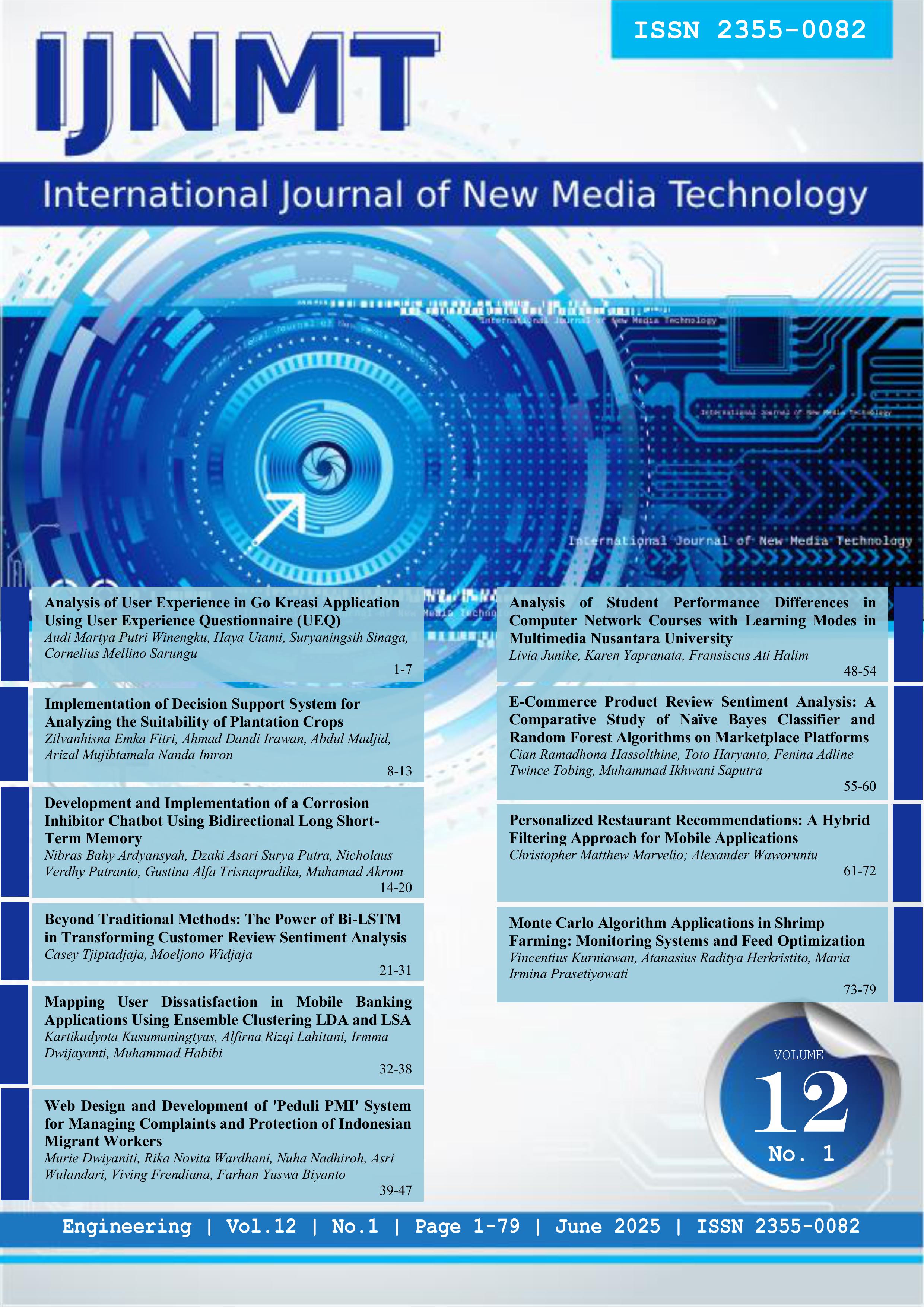E-Commerce Product Review Sentiment Analysis: A Comparative Study of Naïve Bayes Classifier and Random Forest Algorithms on Marketplace Platforms
DOI:
https://doi.org/10.31937/ijnmt.v12i1.4246Abstract
Achieving customer satisfaction and trust is a major challenge for success in the business world. Entrepreneurs must identify problems that arise from reviews given by customers. However, reading and sorting each review is time-consuming and considered inefficient. In order to overcome this, a study was conducted that aims to analyze sentiment on products sold in the Shopee marketplace using the Naïve Bayes Classifier and Random Forest algorithms. The focus of this study is on product reviews from XYZ Store. The main objective of this study is to determine a more accurate and efficient algorithm in classifying review sentiment, which can help companies in marketing strategies and product development. The results of this study can provide insight for companies about consumer responses to marketed products, so that they can be used as a basis for making strategic decisions to improve the quality of services and products. The results of the Random Forest method classification produce superior predictions compared to the Naïve Bayes Classifier method with an accuracy value of 92.5%, precision of 93%, Recall of 92.5% and F1-Score of 90%.
Downloads
Additional Files
Published
How to Cite
Issue
Section
License
Copyright (c) 2025 Cian Ramadhona Hassolthine, Toto Haryanto, Fenina Adline Twince Tobing, Muhammad Ikhwani Saputra

This work is licensed under a Creative Commons Attribution-ShareAlike 4.0 International License.
Authors retain copyright and grant the journal right of first publication with the work simultaneously licensed under a Creative Commons Attribution-ShareAlike International License (CC-BY-SA 4.0) that allows others to share the work with an acknowledgement of the work's authorship and initial publication in this journal.
Authors are able to enter into separate, additional contractual arrangements for the non-exclusive distribution of the journal's published version of the work (e.g., post it to an institutional repository or publish it in a book), with an acknowledgement of its initial publication in this journal.
Copyright without Restrictions
The journal allows the author(s) to hold the copyright without restrictions and will retain publishing rights without restrictions.
The submitted papers are assumed to contain no proprietary material unprotected by patent or patent application; responsibility for technical content and for protection of proprietary material rests solely with the author(s) and their organizations and is not the responsibility of the IJNMT or its Editorial Staff. The main (first/corresponding) author is responsible for ensuring that the article has been seen and approved by all the other authors. It is the responsibility of the author to obtain all necessary copyright release permissions for the use of any copyrighted materials in the manuscript prior to the submission.















